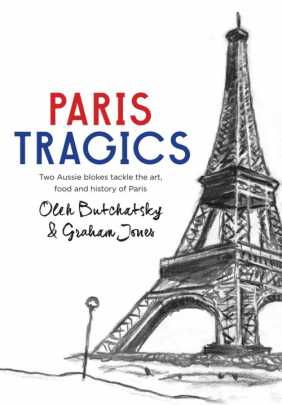Paris Tragics: Navigating the city during the floods

Turning left from Pont de l’Alma and avenue du Président Wilson presents a grand entrance to the 16th.
But before you turn in either direction, the Haussmann commissioned Pont de l’Alma itself deserves some attention. Not because of the Left Bank entrance to that most curious of attractions, the Paris sewers (les égouts), but for one other reason. A favourite pastime of Parisians, especially in the spring snow-melt season, is to regularly inspect the statue of the Zouave soldier in characteristic uniform of fez, wide cloth belt, bloomers, leggings and shin guards. The statue, which commemorates the Zouave regiment’s glorious victory in the Crimean War’s Battle of Alma, stands on the single pier of the bridge and acts as an indicator of the Seine’s flood levels. If the water is up to the soldier’s toes, the quais of Paris are awash but walkable and the barges can still glide under the city’s bridges provided their communication antennae are folded down. Shin level becomes decidedly tricky for both bateaux and piétons while thigh level is definitely a flood and all barge traffic stops.
The “flood of the century” occurred in 1910, when huge storms and incessant rain caused the Seine to rise by 8.62 metres. On January 28th, the river reached the shoulders of the Zouave so that only his head was showing. This flood lasted for 35 days and by the end of it many Parisians had become skilled boat-people in order to negotiate their daily lives. The flood waters reached nearly as far as Gare Saint-Lazare, a good kilometre north of the river. Numerous household cellars, ground-floor apartments and Métro stations went under, with the Montparnasse-Montmartre line only navigable by rowboat. A postal worker with a sense of humour issued a postcard which renamed the Fontaine de Mars in rue Saint Dominique the Fontaine de Neptune, while the Café de l’Aquarium on quai d’Orsay retained its name because it was so apt.
Indeed, the interior of Gare d’Orsay resembled a giant public swimming pool as the Left Bank bore the brunt of the flood. Much of it started to resemble Venice, as makeshift wooden walkways (passerelles) were erected and elegant Parisiennes were carried on the backs of willing males to indulge in their daily window-licking. Rue de Seine was truly a river with rowboats plying their way up and down, while rue du Bac, that narrow thoroughfare named after the ferry (bac) which carried construction materials across the river for the building of the Tuileries, once again hosted barges.
On the Right Bank, barrages were raised in boulevard Haussmann to minimise damage, though 9 rue Jean-Goujon, where Victor Hugo wrote Notre-Dame de Paris, succumbed. For some, however, life carried on pretty much as normal, as evinced by the famous photo of Madame de
Lesseps and la Baronne Delagrange being ferried on a gondola across the swish avenue Montaigne.
Later in the century, in 1955, the Seine rose to immerse the Zouave up to the waist and in 2001 the Zouave had water up to knee level (five metres). The most recent flood started on the 27th of December 2010 when the river overflowed nearly four metres from its bed and reached the feet of the statue. The quais and underground were closed to traffic as a result.
Have you ever visited France?
This is an excerpt from “Paris Tragics”. Read more stories of Oleh and Graham’s French adventures in their book, available to purchase here
To write for Starts at 60 and potentially win a $20 voucher, send your articles to our Community Editor here.










 Proudly Australian owned and operated
Proudly Australian owned and operated